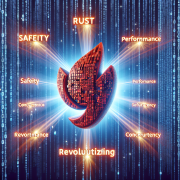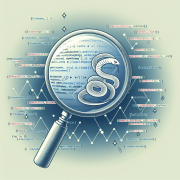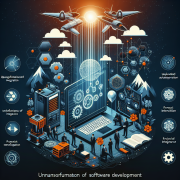Navigating Generative AI in Software Development: Opportunities and Challenges
In the rapidly evolving landscape of software development, the introduction and spread of generative artificial intelligence (GenAI) tools present both a significant opportunity and a formidable set of challenges. As we navigate these changes, it becomes clear that the imperative is not just to work faster but smarter, redefining our interactions with technology to unlock new paradigms in problem-solving and software engineering.
The Cultural and Procedural Shift
As Kiran Minnasandram, Vice President and Chief Technology Officer for Wipro FullStride Cloud, points out, managing GenAI tools effectively goes beyond simple adoption. It necessitates a “comprehensive cultural and procedural metamorphosis” to mitigate risks such as data poisoning, input manipulation, and intellectual property violations. These risks underline the necessity of being vigilant about the quality and quantity of data fed into the models to prevent bias escalation and model hallucinations.
Risk Mitigation and Guardrails
Organizations are advised to be exceedingly cautious with sensitive data, employing strategies like anonymization without compromising data quality. Moreover, when deploying generated content, especially in coding, ensuring the quality of content through appropriate guardrails is crucial. This responsibility extends to frameworks that cover both individual and technological use within specific environments.
Wipro’s development of proprietary responsibility frameworks serves as a prime example. These are designed not only for internal use but also to maintain client responsiveness, emphasizing the importance of understanding risks related to code review, security, auditing, and regulatory compliance.
Improving Code Quality and Performance
The evolution of GenAI necessitates an integration of code quality and performance improvement tools into CI/CD pipelines. The growing demand for advanced coding techniques, such as predictive and collaborative coding, indicates a shift towards a more innovative and efficient approach to software development. Don Schuerman, CTO of Pegasystems, suggests that the focus should shift from merely generating code to optimizing business processes and designing optimal future workflows.
Addressing Workplace Pressures
The introduction of GenAI tools in the workplace brings about its own set of pressures, with the potential of introducing errors and overlooking important details. It is essential to equip teams with “safe versions” of these tools, guiding them to leverage GenAI in strategizing business advancements rather than in rectifying existing issues.
Strategic Deployment of GenAI
Techniques like retrieval-augmented generation (RAG) can be instrumental in controlling how GenAI access knowledge, thereby preventing hallucinations while ensuring citations and traceability. Schuerman advises limiting GenAI’s role to generating optimal workflows, data models, and user experiences that adhere to industry best practices. This strategic approach allows for the execution of applications on scalable platforms without the need for constant recoding.
Training and Credential Protection
Comprehensive training to enhance prompt relevance and the protection of credentials when using GenAI in developing applications are imperative steps in safeguarding against misuse and managing risks effectively. Chris Royles, field CTO at Cloudera, stresses the importance of a well-vetted dataset to ensure best practice, standards, and principles in GenAI-powered innovation.
The Role of Human Insight
Despite the allure of GenAI, Tom Fowler, CTO at consultancy CloudSmiths, cautions against relying solely on it for development tasks. The complexity of large systems requires human insight, reasoning, and the ability to grasp the big picture—a nuanced understanding that GenAI currently lacks. Hence, while GenAI can support in solving small, discrete problems, human oversight remains critical for tackling larger, more complex issues.
In conclusion, the integration of GenAI into software development calls for a balanced approach, emphasizing the importance of smart, strategic work over sheer speed. By fostering a comprehensive understanding of GenAI’s capabilities and limitations, we can harness its potential to not only optimize existing processes but also pave the way for innovative solutions that were previously unattainable.
Focus Keyphrase: Generative Artificial Intelligence in Software Development









Leave a Reply
Want to join the discussion?Feel free to contribute!